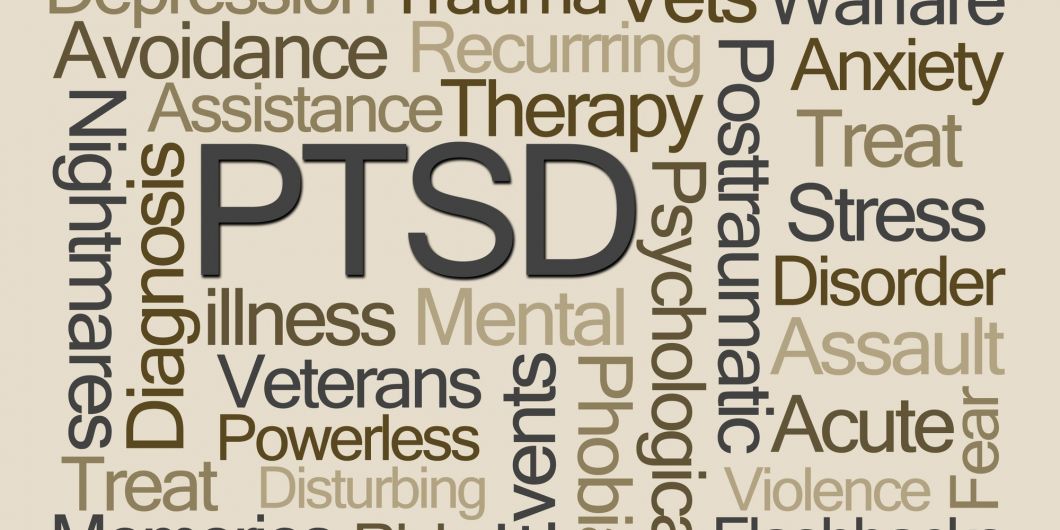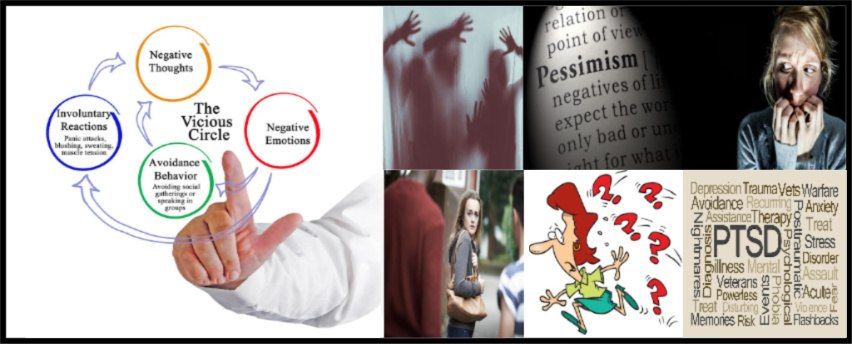Historic Background of PTSD

While some might think of PTSD as a more recent condition, it was first diagnosed in the early part of the twentieth century by Russian army doctors who labelled it as "battle shock".
After World War I, American doctors diagnosed the same problem in soldiers and called it "shell shock".
At that point, PTSD was considered primarily, if not exclusively a condition related to soldiers and the traumas related to their war experiences. Dr Sigmund Freud recognised the condition as well and wrote about it in a memorandum, and he too related it to the "shell shock" and trauma of wounded soldiers.
During and immediately after World War II, army doctors from around the world recognised the trauma of war and its related conditions, but the term PTSD had not yet been created. This was still a condition believed to be the exclusive domain of wounded soldiers.
In 1941 Dr Abraham Kardiner, a practising psychoanalyst and one-time patient of Sigmund Freud, published the book The Traumatic Neuroses of War. There are many psychiatrists and other mental health professionals today who credit him with being "the father of PTSD".
This seminal book continues to be studied today for its foray into a greater understanding of the ways in which traumas affect the human psyche and our physiology.
In 1952, the treatment of mental health issues took a brave step forward with the publication of the first volume of the DSM-I. Known by its full name, the Diagnostics and Statistical Manual of Mental Disorders is the bible of technological terms related to mental health conditions their diagnosis and treatment and was published by the American Psychiatric Association. That volume contained an entry related to PTSD but it was known then as "gross stress reaction".
The diagnosis of PTSD first appeared in the DSM edition of 1952 under the name of "gross stress reaction". For some reason it was left out in the 1968 edition but re-appeared in 1980 after the Vietnam war led to a more intense exploration of the condition.
The condition we now call Post-Traumatic Stress Disorder was first included in the DSM-III in 1980, and thus became officially recognised as an international mental health condition, and no longer the exclusive domain of soldiers. However, it was still considered the primary domain of the military experience. Today, however, there is a much broader interpretation and understanding of what we call PTSD.

The consensus today is that PTSD is recognised as a specific syndrome that occurs in individuals who experience a major traumatic event.
At this time, our modern textbooks agree that the syndrome is comprised of three groups of symptoms:
- Re-experiencing the original event through one's dreams, thoughts or flashbacks.
- Emotional numbing.
- The tendency to avoid anything that will remind one of the original trauma and often a permanent state of increased arousal.
The Onset of PTSD
In order to know if someone has PTSD, they need to be assessed by a proper professional. This could be a psychiatrist, a psychiatric nurse practitioner (in the U.S.), a counselling psychologist, or a clinical social worker. The first thing to know is that anyone who has PTSD will have undergone a traumatic event.
Since trauma is widely defined but sometimes misunderstood, it is helpful that we describe what is meant by a traumatic event.
The American Psychological Association defines a trauma as:
A response to a horrible event, situation or occurrence such as a natural disaster (hurricane, floods), sexual assault, etc.
People who experience these traumas tend to go into shock and denial immediately after the event. However, long-term reactions become problematic.
People experience unpredictable emotions, flashbacks, strained relationships and physical problems such as headaches.
Some of the events that could cause a trauma are:
- Childhood abuse
- Domestic violence
- Sexual assault
- Survival of a serious accident
- Military combat
- Abduction (kidnapping)
- Abusive relationships
- Witness to an act of violence (such as a crime)
- Survival of a crime-related event (such as a bank robbery)
- Onset of a serious illness or disability (such as M.S., spinal cord injury, etc.}
- Natural disaster such as hurricanes, earthquakes or tornados
So, how does PTSD begin?
It might not begin immediately after the traumatic event in fact, there is often a delay in the onset of PTSD as the person becomes more and more connected to the events.
It's important to remember that just because you were in a car accident, for example, doesn't mean you will automatically get PTSD.
There are several factors to take into consideration.
Some of these factors are:
- The severity of the situation
- Intensity of the trauma
- Whether or not someone died as a result of the trauma
- The length of time the person was traumatised
- The ability to get support immediately after the event
The Four Primary Symptoms
Reliving the events:
This could take the forms of flashbacks and nightmares.
During a flashback, a person may ‘feel' as if they are reliving the trauma.

Avoiding situations that remind you of the event:
This is when people do everything, they can to avoid anything that can remind them of the trauma.
For example, if they have had a bad car accident, they might have trouble getting inside a car or even driving again.

Negative changes in beliefs and feelings:
Some people develop a change in their beliefs because of a trauma.
If a person is sexually assaulted, they may find themselves adopting beliefs related to the identity of their attacker.
Some people who experience a trauma can develop feelings of fear, shame and guilt.

Feeling keyed up (hyperarousal):
Some people become nervous, anxious and jittery because of the trauma.
They are constantly on the lookout for danger.

Now, let's review some of the symptoms one might experience in more detail. The symptoms can and will vary from person to person, and one's own individual reactions are important People may or may not have a spectrum of reactions to the trauma depending on the factors listed above. Access to immediate support is essential to the healing process.
The sooner one can be provided with loving, supportive, compassionate and non-judgmental support, and then the healing process can begin.
Some of the symptoms one may experience could include any of the following:
- Bad dreams - nightmares
- Flashbacks - the feelings that the person is once again inside the traumatic event
- Fears and scary thoughts that can feel out of one's control
- The intense fear of being in places, or with people who remind one of the original traumas
- Intense feelings of worry, fear, anxiety, depression, sadness and / or guilt
- Persistent insomnia - difficulty falling asleep
- Constant desire to over-sleep and stay away from the waking world
- The feeling that one is on edge all the time - the need to be hyper-alert in case of imminent danger
- Intense anger over the hurt as a result of the trauma, especially when there are also physical injuries
- Fighting with friends and loved ones - outbursts of anger
- Thoughts of suicide
- Thoughts of feeling isolated and alone
The plethora of symptoms that can accompany PTSD can seem overwhelming. People will experience a wide range of these symptoms over time.
For some individuals, for example, nightmares and flashbacks have been known to last for years.
Others, however, may have minor symptoms for only a short period of time. It is important to remember that one's individual experience of the trauma needs to be honoured.
Here is a direct quote from an individual who copes with PTSD, a survivor who was interviewed by the primary writer / researcher, llanna S. Mandel, MA
"I got nightmares and night terrors especially when a memory came to the surface. I've also felt my heart rate increase, I would begin to sweat, and my vision blurred.
Before the symptoms got under control, I would get angry very quickly. I felt like I had to be constantly on guard: I felt nervous, anxious, and stressed."
